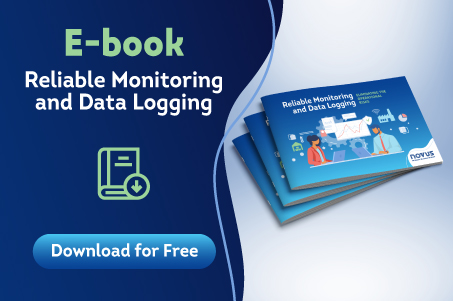Wireless data loggers: monitoring processes with high-tech, low-investment devices
Until a few years ago, the adoption of wireless data loggers was a latent need in remote applications, such as agricultural production and sanitation. Today, not only these segments, but the industrial automation area in different types of operation should consider migrating or adopting a system that doesn’t require a complex structure to monitor processes.
A monitoring solution that replaces wired data loggers for devices with remote communication technology offers several benefits. With LTE connectivity, for example, there is mobility and flexibility for applications. The solution can monitor data remotely without the need for physical infrastructure. Another positive point is installation, which is faster and more economical.
How a wireless data logger works
The LTE technology in the new LogBox LTE wireless data logger transmits data at high speed, with low latency and greater operational efficiency. Consumption is also extremely low, guaranteeing delivery of the information collected even in the event of a power failure.
Innovations like this guarantee sustainability in Industry 4.0, as they reduce the need to create or maintain a wired connection structure. With a global network, LTE technology enables the adoption of smart devices anywhere and guarantees both continuity and improvement of the transmission network for decades to come. In other words, a wireless data logger like LogBox LTE will remain relevant and efficient in the long term.
With their ability to operate in challenging environments, low power consumption and reduced costs, wireless data loggers are ideal for remote monitoring, predictive maintenance and asset management. Case studies demonstrate their effectiveness in different sectors, from manufacturing to utilities, and adoption is boosting operational efficiency and industry competitiveness.
The benefits of a wireless monitoring system
Compared to more traditional monitoring systems, with devices that require a wired structure, adopting a solution that includes a wireless data logger brings benefits such as:
- Performance: LTE technology transmits data at higher speeds and lower latency, with the same guarantee of information delivery.
- Maintenance: A less complex structure is less prone to physical failures such as broken cables.
- Scalability: Without cabling, a system is created where new devices can be added to the network quickly and easily.
- Reliability: LTE frequencies provide a stable and secure connection, with real-time backup of critical data.
In terms of reliability, the low power consumption and self-powered battery allow the LogBox LTE wireless data logger to send data for up to 80 hours in the event of a power failure.
IoT and the future of industry
The future of industry is certainly heading towards a scenario of optimizing the collection and management of monitoring data. Speed is imperative and having insight into process performance in real time is an important step towards remaining competitive.
Thus, low-power technologies are shaping the future of industrial automation. NOVUS’ new wireless data logger, LogBox LTE, offers just such reliable connectivity for devices in the field and makes up solutions that are transforming industrial processes, increasing efficiency and reducing operating costs.
Get to know LogBox LTE: click here.
Read more:
LTE and the future of remote communication in industrial automation
How an IoT controller reduces operating costs
5G in IoT products: Necessity or luxury?

















